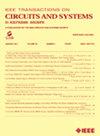基于神经学习的机器人微注射系统粘弹性单元相互作用的自适应滑模阻抗力控制
IF 4.9
2区 工程技术
Q2 ENGINEERING, ELECTRICAL & ELECTRONIC
IEEE Transactions on Circuits and Systems II: Express Briefs
Pub Date : 2025-04-25
DOI:10.1109/TCSII.2025.3564463
引用次数: 0
摘要
机器人显微注射在生物医学工程中得到了广泛的应用,但由于其固有的易变形、易碎和非线性粘弹性等特性,在与细胞的精确力相互作用方面面临着很大的挑战。为了提高机器人微注射系统的交互性能,提出了一种基于神经学习的自适应滑模阻抗力控制方案。所开发方法的主要特点是:1)利用非线性Hunt-Crossley模型推导目标阻抗,以匹配与环境细胞的微尺度相互作用;ii)设计基于阻抗误差的积分终端滑模流形,实现有限时间收敛和精确的力跟踪;iii)该方案通过自适应神经网络补偿器估计外部干扰的不确定界,减轻了环境模型依赖的负担。利用李亚普诺夫理论分析了控制系统的稳定性,并通过一系列实验验证了力跟踪性能。本文章由计算机程序翻译,如有差异,请以英文原文为准。
Neural-Learning-Based Adaptive Sliding Mode Impedance Force Control of Robotic Microinjection Systems Interacting With Viscoelastic Cells
Robotic microinjection has been widely applied in biomedical engineering, but faces a great challenge on the precise force interaction with cells due to their inherently deformable, fragile, and nonlinear viscoelastic properties. This brief proposes a new neural-learning based adaptive sliding mode impedance force control scheme for the robotic microinjection system to improve the interaction performance. The key features of the developed method are as follows: i) Target impedance is derived by utilizing the nonlinear Hunt-Crossley model to match the microscale interaction with environmental cells; ii) An integral terminal sliding mode manifold based on the impedance error is designed to achieve finite-time convergence and accurate force tracking; iii) The proposed scheme relieves the burden of environmental model dependence by estimating the uncertain bound of external disturbances through an adaptive neural network compensator. The control system stability is analyzed by the Lyapunov theory, and the force tracking performance is also verified via a series of experiments.
求助全文
通过发布文献求助,成功后即可免费获取论文全文。
去求助
来源期刊
CiteScore
7.90
自引率
20.50%
发文量
883
审稿时长
3.0 months
期刊介绍:
TCAS II publishes brief papers in the field specified by the theory, analysis, design, and practical implementations of circuits, and the application of circuit techniques to systems and to signal processing. Included is the whole spectrum from basic scientific theory to industrial applications. The field of interest covered includes:
Circuits: Analog, Digital and Mixed Signal Circuits and Systems
Nonlinear Circuits and Systems, Integrated Sensors, MEMS and Systems on Chip, Nanoscale Circuits and Systems, Optoelectronic
Circuits and Systems, Power Electronics and Systems
Software for Analog-and-Logic Circuits and Systems
Control aspects of Circuits and Systems.

 求助内容:
求助内容: 应助结果提醒方式:
应助结果提醒方式:


